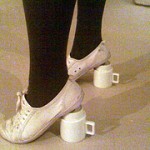The need for approval leads many women to sculpt and mold their bodies, personalities, even lives to fit either/both a societal ideal and an individual’s expectations. Maybe the recent Olympics launched tears of boredom rather than emotion in you, but you smiled and nodded at others’ enthusiasm. In most women’s lives, it’s an ongoing struggle to find that balance of being fully me while still pleasing others. Back in February, I explored this need for honest truth in our relationship lives, concluding that loss of self for the sake of a relationship does not lead to a happy life. It’s not a good idea to “give up me to be loved by you,” as the classic book says.
Healthy or not, backed by psychological science or not, it is often true that we are attracted to those who have characteristics that we seem to be missing. An introvert feels that that wild party person will fill life with greater fun or connection. A serious planner loves the spontaneity of that ”live-in-the-moment” person. In the words of Jerry Maguire, “you complete me.” In the best incarnation of this trend, we seek out relationships with those who help us grow, challenging us to be the best ME we can be. It’s healthy to be a little putty-like, flexible, inspired to try on new interests, characteristics, even personas. And, ideally this is mutual. You both want to meet in the middle, stretching yourselves to be more. In long-term relationships, a sign of health is the ability to adapt to the growth of one’s partner.
(In the worst case scenario, we come to hate the very traits that drew us together in the first place. That spontaneous person fails to follow through on any planning. The introvert needs more quiet time. We lose track of what we liked about each other at the beginning. But I digress . . .)
The grown-up challenge to the adolescent “but everybody is doing it” refrain may apply, even though you might cringe at the comparison: “Are you really going to jump off a bridge because your best friend is?” Don’t be a lemming, and follow even one other lemming off the cliff if that doesn’t feel consistent with who you are. Do you have to homeschool your kids because your friends are and the schools do seem so scary and inadequate? Must you embrace S&M just because Fifty Shades of Grey is hiding on everyone’s ebook shelf and it might enliven your own gray sex life, even if the thought seems laughable or offensive to you? Do you have to start running because your partner does and it’s “good for you” when it makes your knees ache?
Check out this checklist about sacrificing too much for a relationship. When considering what and how much to change when the inevitable push comes from those we love, it is important to be mindful, thoughtful, careful in evaluating what parts of ourselves we do want to alter. Is this inherently good for me? Can this person inspire in me a healthy degree of change, versus complete transformation or loss of me? Will this benefit me outside of this relationship? Is this consistent with my values? What do I want to do?
The biggest challenge of our lives is to be our own version of our best selves, in the face of pressure to be someone else’s ideal, whether that someone is a loved one or the culture. Be neither a sponge–squashed and shaped to others’ ideals– nor a brick–rigid and unaffected–in your own continual evolution to be YOU.




